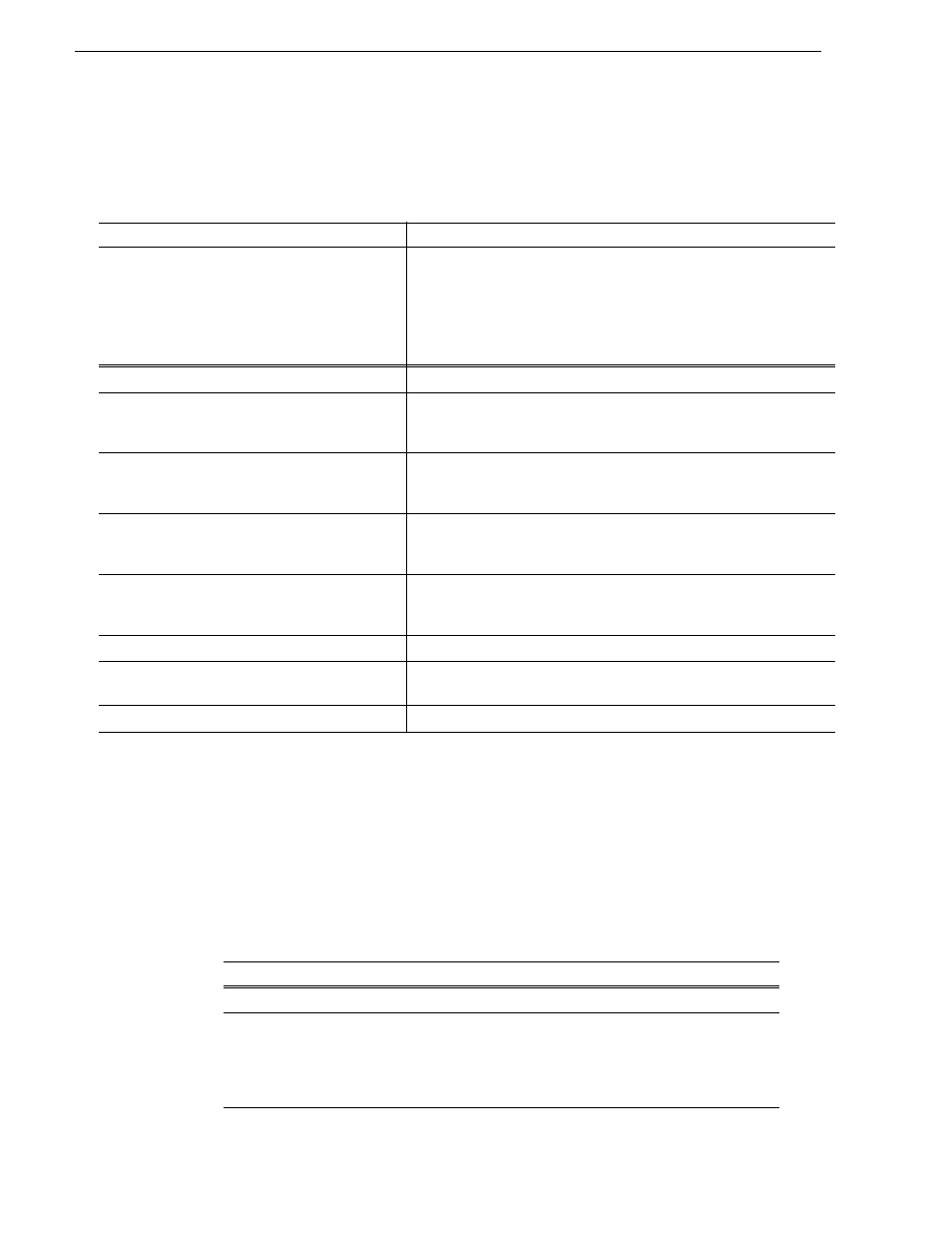Afd input/output settings, Using afd with file transfers, Appendix b specifications – Grass Valley K2 System Guide v.7.2 User Manual
Page 204

204
K2 System Guide
07 April 2010
Appendix B Specifications
AFD input/output settings
The following table shows the various AFD input settings, and the resulting output
values.
Using AFD with file transfers
The following tables describe the AFD file priorities and the AFD behavior with GXF
and MXF transfers.
Input and Settings
Output AFD Value
AFD set in
the clip
properties
AFD
already
in the
data
Track
ARC
Performed
AFD in
Config
Mgr
setting
AFD set
in Clip
property
Translated
from the
clip
property
according
to the ARC
performed
a
a.
For a list of supported AFD conversions, see
“Supported conversions from SD to HD using AFD” on page 209
conversions from HD to SD using AFD” on page 209
.
Same as
data
track
settings
Translated
from AFD
values on
the data
track
No
AFD
Default
AFD
b
b.
For a list of default AFD settings, see
“Default generated AFD values” on page 205
.
n/a
Y
n/a
Never
X
Y
n/a
N
Always or
When
Known
X
Y
n/a
Y
Always or
When
Known
X
N
Y
N
Always or
When
Known
X
N
Y
Y
Always or
When
Known
X
N
N
n/a
Always
X
N
N
n/a
When
Known
X
n/a
N
n/a
Never
X
File transfer AFD priority
1
AFD from the MXF or GXF metadata is copied to the K2 clip properties.
2
If the MXF stream contains an ancillary data track with AFD ancillary data packets and
Active Format Descriptor attribute of the Generic Picture Essence descriptor in the MXF
header metadata is absent, then the AFD value for the K2 clip is derived from the AFD
ancillary data packet located around 2 seconds into the material. That AFD value is then
copied to the K2 clip properties.
